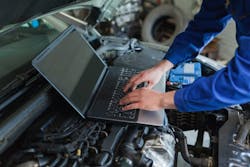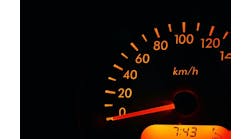Last June Ratchet+Wrench touched base with shops and auto industry experts from across the country to gauge the early impacts of the COVID-19 pandemic.
While some were cutting costs to spare staff layoffs and offset low car counts, others were using their newfound downtime to train their teams or launch campaigns to offer free services to essential workers. But the path ahead was uncertain for all.
Now, just over a year later, vaccines have been distributed, most restrictions have been lifted, and many are returning to life as “normal.”
But how exactly were repair shops impacted over the last year and what are the trends that could stick around long-term? Armed with data from the Tekmetric Index (or TM-500), a new database designed to pool real time data from 500 seasoned repair shops, P.J. Leslie, the company’s director of business development, offered insight on a few clear shifts.
What repair business trends have emerged since the start of COVID-19?
We started collecting data back in February 2020 because so many people were afraid. They were seeing numbers drop and we wanted to be able to offer some transparency around those questions of “Where is car count going?” and “What is happening to the average repair order?”
Unsurprisingly we saw the biggest dip in car count last April to an average of 225 as restrictions across the country were getting into full swing and we’ve seen a rebound from there with averages topping out at 390 last July. But since then, what we’ve seen with the TM-500 is that car count (aside from major travel periods like the holidays and spring break) is pretty consistently on the decline—and this is something that’s going to impact the entire industry.
The entire planet changed the way it works through the course of the pandemic, and working from home looks like it’s sticking. People aren’t commuting as much anymore. A lot of businesses have found their employees can be just as productive if not more productive working remotely and they’re paying for these big empty office spaces. If you’re a business owner and your team is happier and more productive remotely and you can cut that overhead, what would you do? So, this trend in commuters driving less is an impactful shift that took place over the last year and one that’s been borne out in the data.
What’s the good news?
Based on our TM-500 data, while people might be driving less it looks like they’re willing to spend more when they do visit the shop or that shops are getting better at selling more work.
The ARO of TM-500 shops last February was $410 and is currently hovering at $484, but that’s not the case for everyone. Generally the ARO for repair shops across the country is falling between $250-350.
And when you compare the ARO to car count by region, we’re seeing a clear trend. The West Coast is seeing an average car count of 188 with an ARO of $554 while the Southeast region is seeing a car count of 276 with an ARO of $336. Cost of living may account for some of that difference, but not all of it. It’s not coincidence that those with the lowest car count have by far the highest average repair order.
The key shift here is that consumers seem to be willing to pay more for a better buying experience and that shops have become more efficient with the cars that are coming through the shop. If customers are driving less and coming into the shop less, every repair order is now that much more meaningful. There’s new pressure to make the most of every RO.
And the customer has a much higher likelihood of saying yes to repairs if they can see and understand exactly what’s going on with their cars and why they actually need the repairs that are being recommended.
Think about it. These days when you order a pizza, you get a text when your order is placed, a text when it’s ready, a text when it’s been picked up by the driver, etc. But at most shops, when you’re facing a $3,000 transmission repair you’re getting a somewhat confusing piece of paper. The data shows that customers are saying “I’m happy to spend more with you if you can give me a better buying experience.”
Are there any other lasting trends you think have staying power?
The value of web-based tools was never more clear than it was last year. When customers could no longer sit in a shop lobby while they waited for their car, texting and easy remote communication was critical. Being able to text back and forth with customers was huge for both customers and shop owners.
And the ability to work remotely for the first time became really important. Up until last year a lot of shops were still using server-based systems that were built in the 90s. They had to go into the shop to run reports and do the bulk of their work, but that ability to work from anywhere is something people got a taste for and I don’t see that going away.




